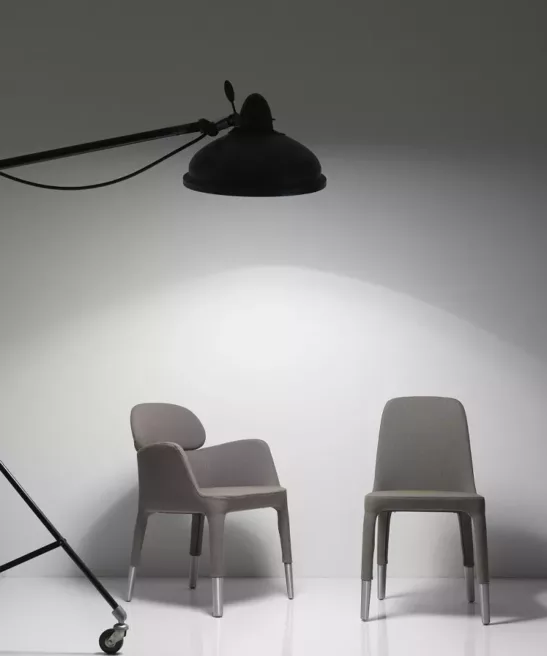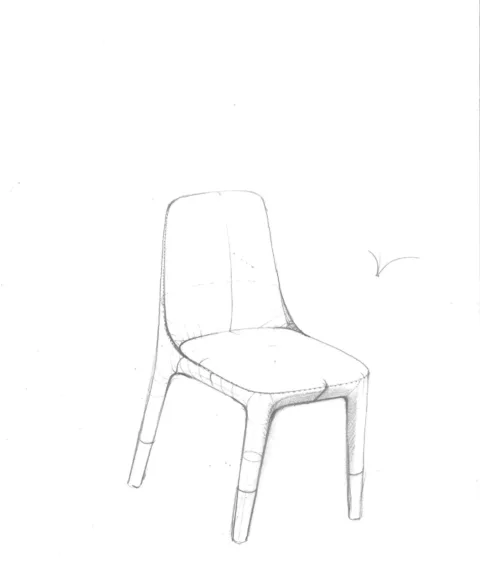Falling among the greatest for exceptional projects, he occupies a special place in the landscape of international design where few know how to evolve with ease and strength. The career of Patrick Jouin and his design firm, Patrick Jouin iD, was recognised by a monographic exhibition at the Centre Pompidou in 2009 and honoured by the Compasso d’Oro Award for the Pasta Pot in 2011. Several of his creations have entered the permanent collections of museums around the world, notably the “Solid” collection at MoMA, which in 2004 was the first series of scale 1 furniture made using 3D printing technologies.
Patrick Jouin is also involved in interior design projects with his partner Sanjit Manku, within the Jouin Manku firm founded in 2006.


n 1998, Patrick Jouin created his own firm and took charge of projects in several fields: creation of furniture, interior architecture, industrial design and even exhibition scenography. He thus collaborates with major brands such as Leucos, Pedrali, Cassina, Kartell, Alessi, Puiforcat, or even Fermob, Renault, Ligne Roset and Vallauris. His work gives an important place to space and light. Its sober and discreet style mixes tradition and modernity. In 1999, he met the multi-star chef, Alain Ducasse, who entrusted him with the creation of most of his restaurants: Plaza Athénée in Paris, Spoon Byblos, and Mix in New York and Las Vegas. He also signed the redevelopment of the Le Jules Verne gourmet restaurant, located on the second floor of the Eiffel Tower, and the decoration of the jewellery boutique Van Cleef & Arpels, located on Place Vendôme. When he creates objects, he likes to use very sophisticated technologies. For him, “technology makes it possible to manufacture what yesterday seemed impossible. It changes a lot of things for designers”.
I strongly believe in intuition, which comes to mix the animal in us; experience, intuition.
Before the drawing, there is the personality of the object, the character, the aura that we want to give it. When we draw a room, we draw a mute character that comes to change the atmosphere and the atmosphere of a space. Through the layout, we come to give a soul to a functional object, and this personality will then have an impact in the room it inhabits. A chair, impertinent, funny, serious, chic…
The creation process, the stages born following the first sketch, from the design to the development of models and prototypes, the modifications and tests which constitute the developments, up to industrialisation and production, are all as important as the first sketch. This sketch triggers the discussion between the brand and the designer, and these different stages come to feed the project until the final product.
This is where the designer’s proposal and the brand’s know-how meet in order to offer a piece that makes sense, that will mark the individuals and accompany them in their daily lives. The technologies available to Pedrali, in terms of metal, wood or plastic, combined with the use of numerically controlled machines, allow materials to be pushed to their limits. These technical possibilities constitute the starting point of any project and narrate the possibilities.
Here, the drawing testifies to a will, to a proposal, whether it is a question of benevolence in the choice of materials, their consumption, their durability or the very use of this creation. The objective is to create a piece with a personality, which by its curves, its cuts, its materials, its very aesthetics, materialises the intention of the designer and the supplier, then the will of the individual who chooses it to be the witness of his daily life, the one that comes to give character to a space.
Find the video of the exhibition here.
